1. Smart Home Technology Integration
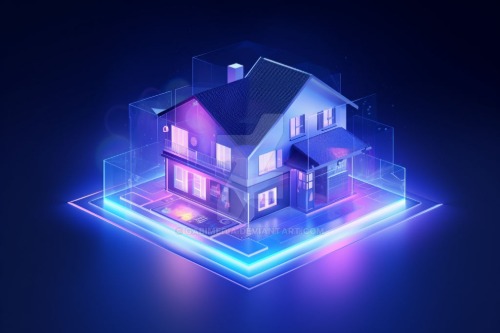
In 2025, buyers will expect homes to come equipped with smart technology as a standard feature rather than an optional upgrade, according to CNET. Devices like smart thermostats, lighting systems, and security cameras have become essential for convenience, energy savings, and security. Many homeowners now want the ability to control everything from their smartphone or even through voice commands. Features like keyless entry, smart doorbells with cameras, and app-controlled appliances are no longer considered futuristic—they are practical necessities. As more devices become interconnected through platforms like Google Home and Amazon Alexa, buyers will look for homes that support seamless automation. Smart thermostats can learn a household’s routine and adjust temperatures accordingly, reducing energy waste and lowering utility bills. Similarly, smart irrigation systems can optimize lawn watering based on weather conditions, conserving water. In competitive real estate markets, homes lacking these features could be at a disadvantage.
Security is another major driver behind the demand for smart home tech. Buyers prioritize properties with advanced security systems that include motion sensors, remote monitoring, and real-time alerts. Many people feel safer knowing they can check on their home from anywhere via a smartphone. Video doorbells allow homeowners to communicate with visitors without opening the door, adding an extra layer of protection. Even smart locks, which allow keyless entry and temporary access codes, are becoming a must-have for both convenience and security. As cyber threats rise, homes with built-in cybersecurity measures for smart devices will also be more appealing. Overall, buyers want homes that are not just connected but intelligently designed to enhance everyday living.
2. Sustainable and Energy-Efficient Features
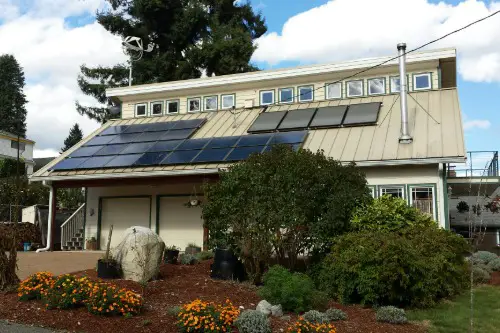
Energy efficiency has shifted from being a “nice-to-have” to a top priority for homebuyers in 2025, according to Show Home Magazine. Rising energy costs and growing environmental awareness mean that buyers are actively seeking homes with lower utility bills and a reduced carbon footprint. Features like solar panels, energy-efficient windows, and high-performance insulation are in high demand. Many buyers are looking for homes with net-zero energy capabilities, meaning they generate as much energy as they consume. LED lighting, Energy Star-rated appliances, and high-efficiency HVAC systems are also becoming standard expectations. Some homeowners are even installing battery storage systems to store solar energy for use during peak hours. Sustainable building materials, such as recycled wood and low-VOC paints, are also gaining traction, appealing to eco-conscious buyers.
Beyond cost savings, buyers recognize that energy-efficient homes provide greater comfort and healthier living environments. Better insulation means fewer drafts and more consistent indoor temperatures year-round. Smart climate control systems optimize heating and cooling, ensuring maximum efficiency with minimal waste. Water-saving fixtures, such as low-flow toilets and tankless water heaters, also appeal to buyers looking to reduce their environmental impact. Many people are also prioritizing homes built with sustainable construction practices, ensuring durability and lower maintenance costs over time. With government incentives and tax credits available for energy-efficient upgrades, buyers are more motivated than ever to choose homes with these features. In short, homes that emphasize sustainability will have a competitive edge in the market.
3. Flexible and Multifunctional Spaces
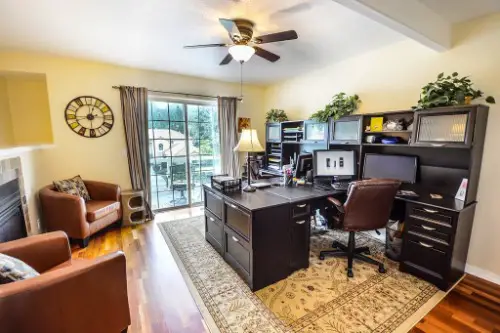
The way people use their homes has changed dramatically, and buyers in 2025 will prioritize properties that offer flexibility, according to Mirror Review. Open floor plans are still popular, but buyers also want defined spaces that can serve multiple functions. Home offices are now considered essential, with many buyers looking for dedicated workspaces with soundproofing and built-in desks. Beyond work, people want multipurpose rooms that can adapt to their changing needs, such as home gyms, hobby spaces, or guest quarters. Finished basements and attics that can be easily converted into extra living spaces are highly desirable. Movable walls and modular furniture are gaining popularity as creative solutions to make rooms more versatile.
This shift is largely driven by the increase in remote work and hybrid job arrangements, which have made home offices a necessity rather than a luxury. Families also need adaptable spaces to accommodate children, aging parents, or short-term rentals for extra income. A single-purpose room is no longer practical—buyers want homes where they can easily switch up how a space is used without extensive renovations. Smart storage solutions, such as built-in shelving and hidden compartments, help maximize space efficiency. Homes that offer this level of adaptability will attract a wider range of buyers who see their home as an investment in both comfort and practicality.
4. Enhanced Outdoor Living Areas
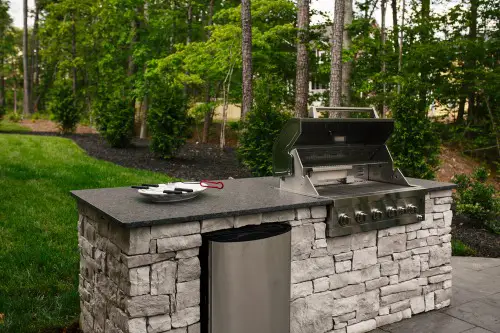
Outdoor living spaces have become just as important as indoor ones, and in 2025, buyers will be looking for homes with well-designed exteriors, according to Builder Magazine. Patios, decks, and backyards that feel like an extension of the home are in high demand. Features like built-in grills, fire pits, and pergolas create inviting outdoor spaces for entertaining and relaxation. Many buyers want outdoor kitchens equipped with refrigerators, sinks, and ample counter space to make al fresco dining more convenient. Comfortable seating areas with weather-resistant furniture are another must-have. Some even look for homes with covered patios or screened-in porches to extend outdoor enjoyment throughout the year.
Beyond aesthetics, buyers are also prioritizing functional outdoor spaces that add value to their lifestyle. Homes with well-maintained gardens, drought-resistant landscaping, and automated irrigation systems stand out in the market. Swimming pools and hot tubs continue to be desirable, especially in warmer climates where outdoor living is a year-round experience. Many people are also interested in edible gardens or backyard greenhouses as sustainability and self-sufficiency gain importance. For city dwellers, even a small balcony with space for plants and a cozy seating area can make a big difference. Outdoor spaces that feel private, with fencing or natural barriers, also add appeal. A well-designed outdoor area is no longer just a bonus—it’s a key selling point.
5. Health-Focused Home Features
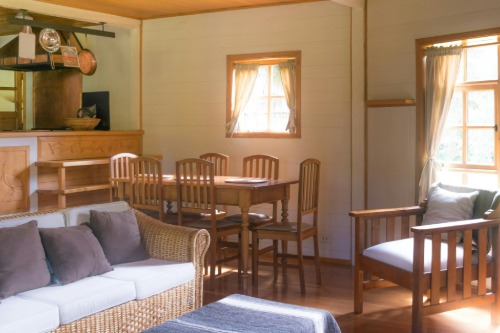
Wellness has become a major factor in homebuying decisions, and in 2025, buyers will prioritize homes that promote health and well-being, according to Forbes. Indoor air quality is a top concern, leading to increased demand for advanced ventilation systems, air purifiers, and non-toxic building materials. High-efficiency HVAC systems with HEPA filters help reduce allergens and pollutants, making indoor air cleaner and healthier. Homes with large windows and good natural lighting also contribute to better mood and productivity. Many buyers look for features like circadian lighting systems, which mimic natural daylight patterns to support sleep and overall well-being.
Beyond air quality, buyers want homes designed with physical wellness in mind. Dedicated spaces for exercise, such as home gyms or yoga studios, are increasingly popular. Bathrooms with spa-like features, including steam showers and deep soaking tubs, offer a retreat for relaxation. Some buyers even look for properties with meditation rooms or soundproof spaces for mindfulness practices. Outdoor wellness features, such as private walking paths, meditation gardens, and saltwater pools, also add value. With health and wellness becoming a major priority for many people, homes designed with these features in mind will have a competitive advantage.
6. High-Speed Internet and Home Connectivity

In 2025, reliable high-speed internet is no longer a luxury—it’s a necessity. With more people working from home, streaming entertainment, and using smart home devices, buyers are prioritizing properties with fiber-optic or gigabit-speed internet connections. Slow or unreliable internet can be a dealbreaker, especially for remote workers who need seamless video conferencing and cloud-based collaboration. Homes with built-in Ethernet wiring and dedicated server closets for routers and networking equipment are increasingly attractive. Properties in areas with limited broadband access may struggle to compete unless they offer alternative solutions like satellite internet or mesh Wi-Fi systems.
Beyond speed, buyers want homes with seamless connectivity across all rooms. Smart home technology, from lighting to security systems, relies on a strong network, making whole-home Wi-Fi coverage essential. Larger homes benefit from pre-installed Wi-Fi extenders or mesh networks that eliminate dead zones. Some buyers even prioritize homes with hardwired connections in key areas like home offices and entertainment centers to reduce lag. Developers are taking note, designing homes with advanced networking infrastructure to meet these demands. In an increasingly digital world, a home’s internet capabilities are just as important as its plumbing and electrical systems.
7. Proximity to Walkable and Mixed-Use Communities
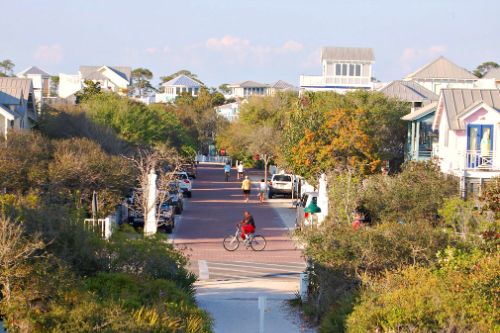
The demand for walkable neighborhoods and mixed-use developments is growing as buyers seek convenience and lifestyle amenities. People want to live in areas where they can walk or bike to restaurants, grocery stores, parks, and entertainment venues. This trend is particularly strong among millennials and Gen Z buyers, who prioritize accessibility over long commutes. Urban and suburban areas with well-planned sidewalks, bike lanes, and public transit options are more appealing than car-dependent neighborhoods. Mixed-use developments that combine residential spaces with retail and office spaces are also gaining traction, offering a blend of work, leisure, and community interaction.
Buyers are increasingly looking for homes that support a car-light lifestyle. Many prefer to live in communities with nearby fitness centers, farmers’ markets, and cultural attractions. Easy access to public transportation is also a major selling point, as people seek to reduce their dependence on cars and rising fuel costs. Properties near parks and green spaces add additional appeal, especially for families and pet owners. Cities and towns investing in pedestrian-friendly infrastructure are seeing higher property values as demand for this lifestyle grows. Walkability is no longer just a perk—it’s a key factor influencing home values and desirability.
8. Aging-in-Place and Accessibility Features
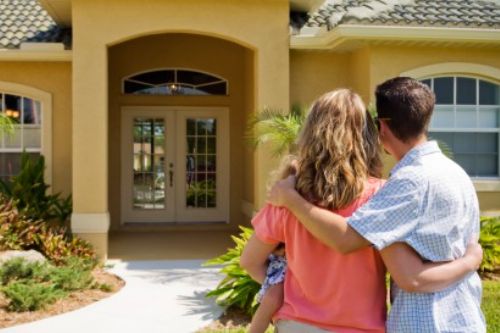
As the population ages, more buyers are thinking long-term and seeking homes that can accommodate their needs as they grow older. Features like wider doorways, step-free entrances, and walk-in showers are becoming increasingly desirable. Many buyers are planning ahead, looking for single-story homes or those with elevators to avoid mobility challenges in the future. Open floor plans with minimal barriers make it easier for residents of all ages to move around safely. Smart home technology, such as voice-controlled lighting and automated doors, further enhances accessibility and convenience.
It’s not just retirees who are thinking about accessibility—multi-generational households are on the rise. Homes with in-law suites, separate entrances, or adaptable spaces for aging parents are in high demand. Even younger buyers are considering long-term usability, choosing homes with features that will allow them to stay in place as they age. Developers are responding by incorporating universal design principles, ensuring homes are both stylish and functional for all life stages. A home that can grow with its owners is not just a smart investment—it’s a necessity for modern buyers.
9. Electric Vehicle (EV) Charging Infrastructure
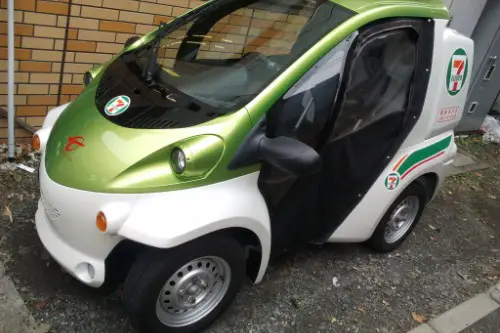
With the rapid growth of electric vehicle adoption, buyers in 2025 are prioritizing homes with EV charging capabilities. A simple garage outlet is no longer enough—many buyers want dedicated Level 2 charging stations installed. Homes that are pre-wired for EV chargers appeal to future-proof buyers who may not own an electric vehicle yet but plan to in the coming years. In multi-unit buildings, properties with communal EV charging stations are becoming a major selling point. As automakers phase out gas-powered vehicles, homes without charging access could lose appeal.
Buyers also consider the sustainability benefits of EV charging-ready homes. A property with solar panels and an EV charger allows homeowners to power their car with renewable energy, reducing long-term costs. Some new developments are incorporating solar-integrated carports or battery storage systems that optimize charging efficiency. In cities where street parking is common, buildings with dedicated EV charging spaces stand out in the competitive market. As EV ownership becomes mainstream, home listings without charging options may struggle to attract modern buyers.
10. Home Storage and Organization Solutions
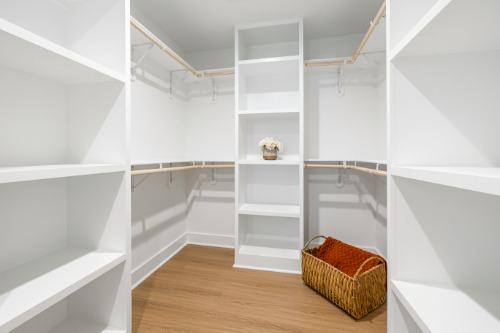
Buyers in 2025 are looking for homes with smart storage solutions that maximize space and reduce clutter. Walk-in closets, built-in shelving, and spacious pantries are high on buyers’ wish lists. Homes with well-designed mudrooms, featuring cubbies and hooks for coats and shoes, are especially attractive to families. Organized garages with custom storage systems also add significant value, as homeowners need space for tools, sports equipment, and seasonal decorations.
Storage isn’t just about space—it’s about efficiency. Buyers appreciate homes with under-stair storage, hidden compartments, and built-in cabinetry that blends seamlessly into the home’s design. Large kitchen islands with extra drawers, pull-out pantry shelves, and deep cabinets for pots and pans are in high demand. Even bathrooms with extra linen closets or medicine cabinets make a difference. As minimalism and organization trends grow, homes that offer both storage capacity and aesthetic appeal will attract more buyers.
11. Home Gym and Fitness Areas
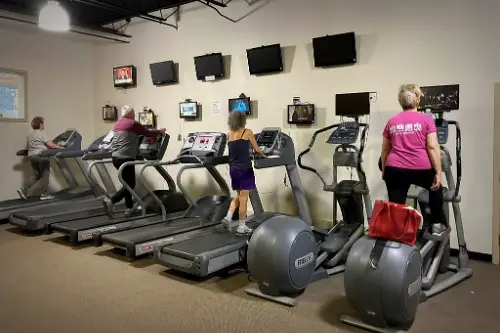
The home fitness boom shows no signs of slowing down, and buyers in 2025 are looking for properties with dedicated workout spaces. Whether it’s a fully equipped gym, a yoga studio, or just an open area for exercise, homes that support an active lifestyle are more desirable. Some buyers seek built-in features like rubber flooring, full-length mirrors, and mounted TVs for virtual workouts. Even smaller homes with garage gyms or flexible workout spaces gain an edge in the market.
The pandemic accelerated the home fitness trend, but convenience and customization are keeping it alive. Buyers want a space where they can exercise without the hassle of commuting to a gym. Homes with outdoor workout areas, such as backyard yoga decks or swimming pools, add even more appeal. Developers are responding by designing homes with fitness-focused amenities like resistance bands built into walls or retractable equipment storage. As health-conscious living becomes a priority, home gyms are no longer an extra—they’re an expectation.
12. Homes Designed for Short-Term Rental Potential
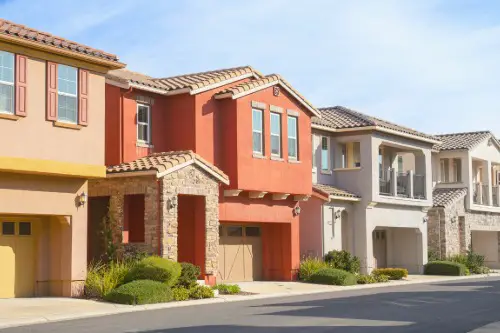
With platforms like Airbnb and Vrbo continuing to thrive, many buyers in 2025 are looking for homes that offer short-term rental potential. Whether it’s a separate guest house, a finished basement with a private entrance, or a detached ADU (Accessory Dwelling Unit), buyers see rental income as a way to offset mortgage costs. Homes in vacation-friendly locations or cities with high tourism appeal are particularly desirable. Properties that already have proper zoning and permits for short-term rentals gain an even greater advantage.
Even buyers who don’t plan to rent immediately are thinking ahead. A home with a flexible layout—such as a dual-master suite or an in-law apartment—provides options for future income potential. Separate entrances, soundproofing, and self-contained living spaces make short-term rentals more practical. Some developers are even designing communities with built-in rental-friendly features, anticipating this growing demand. As homeownership costs rise, buyers are increasingly drawn to properties that offer earning potential.


